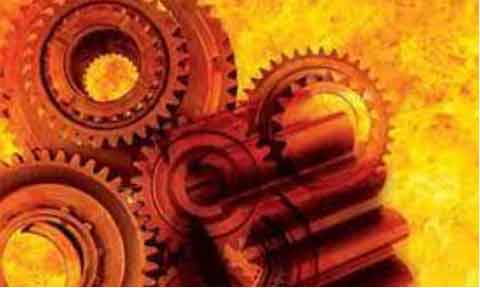
Decarburization is a common concern in heat treatment processes, where the carbon content near the surface of the material is reduced, leading to a loss of hardness and compromised mechanical properties. Preventing decarburization is crucial to maintain the desired carbon distribution and ensure the desired properties of heat-treated components. This article explores various strategies and techniques to protect against carbon loss and minimize decarburization during heat treatment.
1.Controlling the Heat Treatment Atmosphere:
- Implementing a controlled atmosphere during heat treatment is essential to prevent decarburization. The choice of atmosphere depends on the specific heat treatment process and material. Common protective atmospheres include:
- Neutral Atmosphere: Inert gases such as nitrogen or argon are used to create a non-oxidizing environment, preventing carbon loss.
- Protective Gases: Hydrocarbon-based gases like methane or propane can be used to create a carburizing atmosphere, where carbon is introduced into the material surface to counteract decarburization.
- Vacuum Heat Treatment: Conducting heat treatment in a vacuum chamber eliminates the presence of oxygen, preventing oxidation and decarburization.
2.Proper Sealing and Insulation:
- Ensuring proper sealing and insulation of heat treatment furnaces or chambers is vital to maintain the desired atmosphere and prevent the ingress of oxygen. This includes:
- Sealing mechanisms: Implementing reliable seals, gaskets, and closures to prevent air leakage into the heat treatment chamber.
- Insulation materials: Using high-quality insulation materials to minimize heat loss and maintain temperature uniformity, reducing the need for excessive heating and potential exposure to oxygen.
3.Surface Preparations:
- Adequate surface preparation before heat treatment plays a critical role in preventing decarburization. Key considerations include:
- Cleaning: Thoroughly cleaning the material surface to remove contaminants, such as dirt, oils, or oxides, which can contribute to decarburization.
- Surface Protection: Applying protective coatings or compounds to create a barrier between the material surface and the heat treatment environment, reducing the risk of carbon loss.
4.Optimal Heat Treatment Parameters:
- Proper selection and control of heat treatment parameters are crucial to prevent decarburization. Key factors to consider include:
- Temperature: Maintaining precise temperature control within the desired range to prevent excessive heating and potential carbon loss.
- Heating and Cooling Rates: Implementing controlled heating and cooling rates to minimize thermal gradients, which can contribute to decarburization.
- Time: Optimizing the duration of the heat treatment process to achieve the desired microstructure and properties without excessive exposure to high temperatures.
5.Post-Treatment Techniques:
- Implementing appropriate post-treatment techniques can help mitigate decarburization and restore the desired carbon distribution:
- Tempering: Performing tempering immediately after the heat treatment process can help relieve stresses and promote the formation of a uniform microstructure, minimizing the effects of decarburization.
- Surface Modification: Applying surface treatments such as carburizing or nitriding after heat treatment can reintroduce carbon or nitrogen into the material surface, compensating for any potential decarburization.
Preventing decarburization is essential to maintain the desired carbon distribution and ensure the integrity and performance of heat-treated components. By controlling the heat treatment atmosphere, ensuring proper sealing and insulation, conducting adequate surface preparations, optimizing heat treatment parameters, and employing appropriate post-treatment techniques, manufacturers can protect against carbon loss and minimize decarburization. Careful process design, strict quality control, and adherence to industry standards and specifications are crucial to achieving high-quality heat-treated components with the desired properties.
